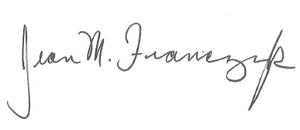Editorial
Article DOI: https://dx.doi.org/10.15180/150301
Issue 03: Communications
https://dx.doi.org/10.15180/150301/001As long as we live, and whatever fate may have been assigned to us, or we have chosen, there is no doubt that the better the quality of our communication, the more useful (and agreeable) to ourselves and others we will be and the longer we will be remembered.
Primo Levi
For this third issue of the Science Museum Group Journal we have collected articles under the theme of “communications”. Broadly defined this theme embraces many of the subjects we are interested in – communication technologies, communication with our audiences, communication through different media and communication between the past and the present. The theme is especially pertinent with the opening of one of our largest permanent exhibitions – Information Age – and the gallery is discussed here in two articles. Lead curator Tilly Blyth reveals the challenges the exhibition faced in exhibiting such a complex and ephemeral topic as “communications” and the approach of the gallery to participatory practice is considered by co-authors from Leicester University and the Information Age team, who explore the issues national museums face in scaling up participation projects to meet the needs of national audiences.
But the openness of the theme also allows the Journal to examine other aspects of communication: Aleks Kolkowski discusses a re-enactment of a 1913 acoustic recording to explore the impact of early recording techniques on the experience of both playing for and listening to recorded music. In many ways the re-enactment itself allowed music students to communicate with their historical predecessors, and the work foreshadows planned research into the Museum’s fascinating collection of early music recorders. Sally Shuttleworth also looks at how the past speaks to the present, but in the field of citizen science – an area on the rise today but with its roots firmly in the Victorian era.
The Journal continues its intention to feature research from authors outside the Science Museum Group, and here we welcome Michael Kay’s look at the impact of non-users of the developing telephone system in the UK. His approach, though from a different perspective to that of an exhibition team, supports the idea that an understanding of technological development is made richer by considering the ways people encountered it, and especially by exploring untold stories and varieties of user experience. Andrea Bandelli brings a European perspective in his examination of audiences” appetite for participation in museums and for museums to be involved in policy making. Perhaps communication with political stakeholders is something that museums will be doing more of in the future?
The ultimate aim of the Journal is to communicate some of the extraordinary and fascinating research that goes on inside science museums and universities around the world. We hope that you enjoy this issue and will discuss and share with friends and colleagues.



